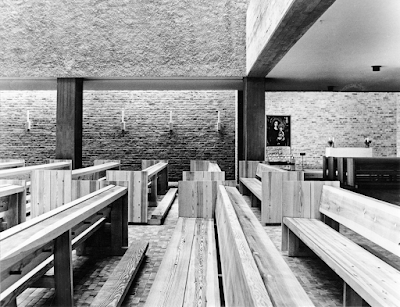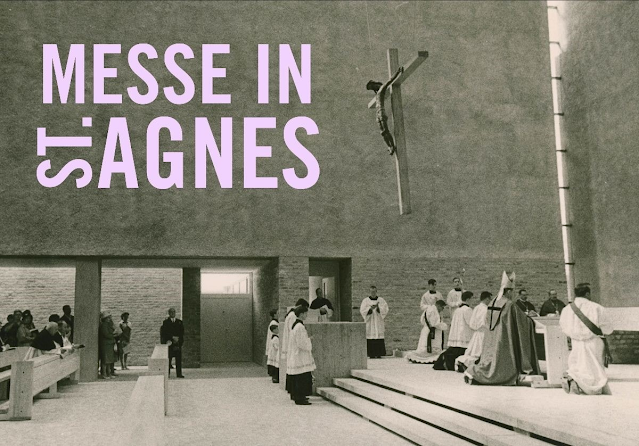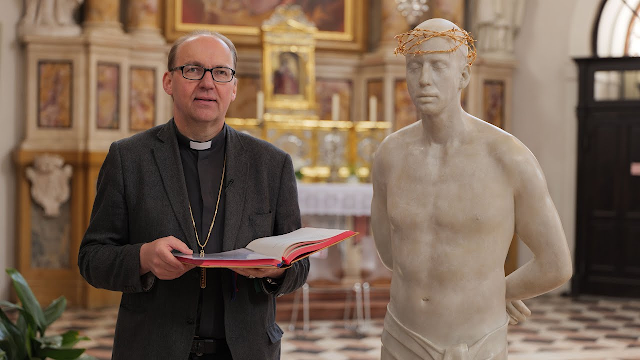Former Church of Saint Agnes in Berlin now venue for Mickey Mouse and depictions of a homosexual Christ
In 1966, just one year after the Second Vatican Council, the Church of Saint Agnes in Berlin was consecrated. The people cried out for Redemption and all they were given were the hardest of brutalist stones, within and without. It proved to be a sepulchre for the Faith, as worshippers could never be comfortable in a place which also entombed them and their souls.
Now
Then
Originally, St. Agnes Church belonged to the Catholic parish, which released the building for rent in September 2004 for financial reasons; the number of parishioners had dropped dramatically. Some furnishings from the church room, such as the altar and pews, have been moved to St. Boniface Church. Because there was no money to maintain or renovate the buildings, building experts felt that the preservation of the church ensemble was at risk. In 2005, the Berlin State Monument Council therefore had the St. Agnes Church, along with eight other churches, was included in a list of proposed new monuments. From 2005 to 2011, the City Church Berlin, led by the free church preacher Volkhard Spitzer, temporarily used the building. After the Catholic church gave up using the building ensemble, new usage concepts were developed on behalf of the Friedrichshain-Kreuzberg district council, which were intended to lead to a structural renovation of the church building and the parish hall. However, none of these utilisation concepts could be successfully implemented by the end of 2011.
After the gallery owner Johann König, who at that time had already been running an art gallery in Berlin's city centre (Dessauer Straße) for several years, was made aware of the ensemble by the architect Arno Brandlhuber, he leased the church building in 2012 for 99 years. From Wikipedia
It is now called the König Gallery. Instead of being used for Mass (Messe in German), it is used for art fairs (also Messe in German, hence the advertising picture above). It has a busy exhibition programme.
The knowingly entitled "Ecce Homo" gazing at a crucified frog.
Bishop Glettler liked this work so much he brought it to Innsbruck. As the military-industrial complex which caused so much concern to Eisenhower in the 1950s, there is a modern art-ecclesiastical modernism complex which continues to wound the Catholic Church on a daily basis.
He also has an aesthetic sense that sees good in crucified frogs.






















.jpeg)

Comments